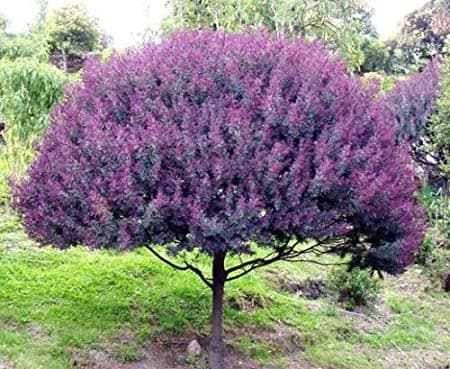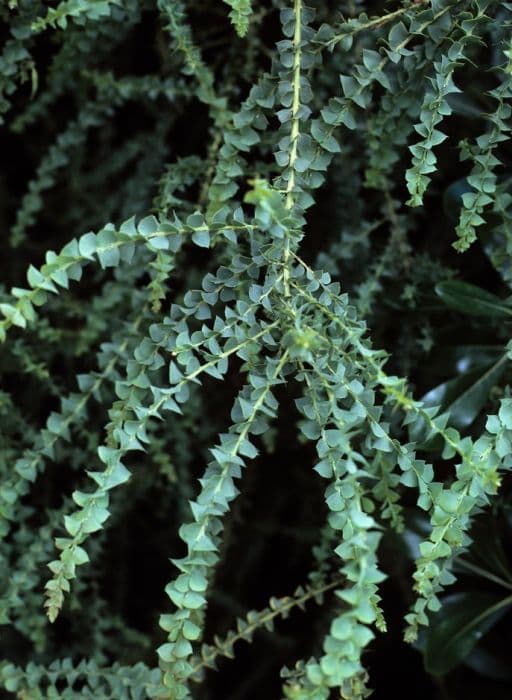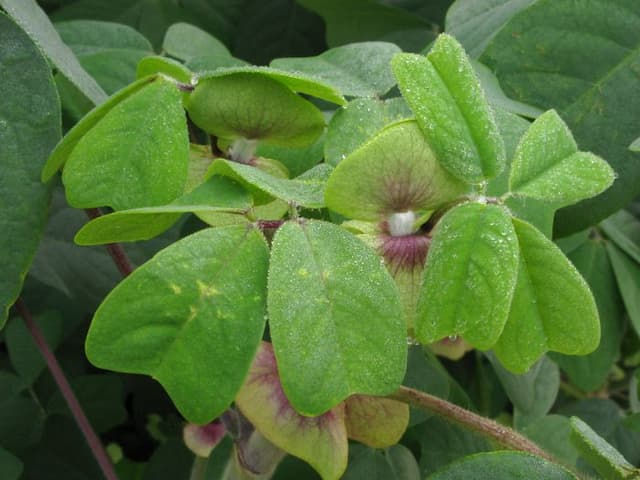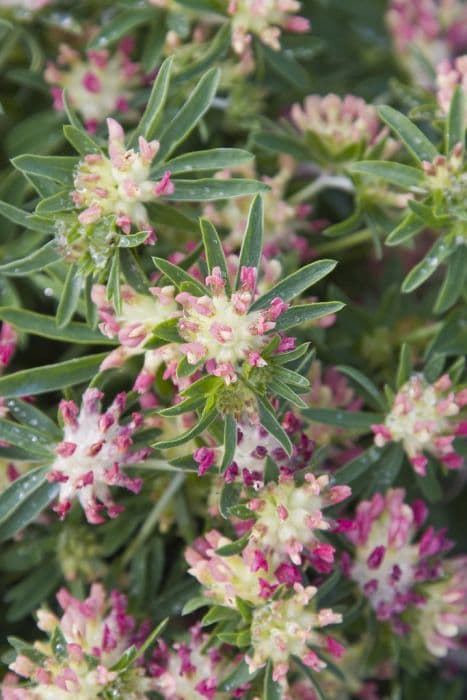Oregon Sugar Pod Pea Pisum sativum 'Oregon Sugar Pod'

ABOUT
The Oregon Sugar Pod is a variety of pea that is widely appreciated for its sweet and tender edible pods. This plant typically produces climbing or vining stems that are lined with pairs of leaf-like structures called tendrils, which curl and clasp to support the plant as it grows. The leaves are bright green, composed of one to three pairs of leaflets, and often accompanied by a terminal tendril. The Oregon Sugar Pod is especially known for its flowers, which are white and butterfly-shaped, typical of the pea family. These blooms give way to the plant's namesake pods: the sugar pods themselves. The pods are broad and flattened, rather than round, with a typically translucent and succulent appearance. Because they are edible when young, the pods lack the tough inner lining found in other pea varieties that are grown for their mature seeds. The peas inside these pods are generally small, sweet, and arranged in a single row. The plant maintains an overall lush and leafy appearance, with the flowers and pods adding visual interest and hinting at the plant's purpose in the garden – that is, to produce a tasty vegetable crop. The Oregon Sugar Pod is a cool-season plant and its growth and productivity reflect that preference, flourishing in cooler temperatures.
About this plant
 Names
NamesFamily
Fabaceae.
Synonyms
Oregon Sugar Pod Pea, Snow Pea, Sugar Pea, Sweet Pea, Garden Pea, English Pea, Snap Pea.
Common names
Pisum sativum.
 Toxicity
ToxicityTo humans
The common name for Pisum sativum 'Oregon Sugar Pod' is pea. Generally, peas are not toxic to humans and are commonly consumed as food. However, it is important to eat them cooked, as raw peas or pea plants — particularly in large amounts or if not properly cooked — could potentially cause digestive upset because of compounds known as lectins which can interfere with digestion if consumed in their raw state. Additionally, individuals with specific food allergies to legumes should avoid consuming peas to prevent allergic reactions. Ingesting other parts of the plant, like the stem or leaves, is typically not advised, as it can cause similar digestive discomfort due to the presence of indigestible fibers, but it is not inherently toxic.
To pets
The common name for Pisum sativum 'Oregon Sugar Pod' is pea. Peas are not typically considered toxic to pets, including cats and dogs, and are often found in some commercially produced pet foods as a source of carbohydrates and protein. However, feeding pets large amounts of peas could potentially cause digestive upset, such as gas or bloating, due to their complex sugars and fibers. It's important to introduce any new food, including peas, into a pet's diet gradually and to feed them in moderation. If a pet has specific health issues or dietary restrictions, it is advised to consult with a veterinarian before adding peas to their diet. As a general rule, all new foods should be given in moderation to watch for any adverse reactions.
 Characteristics
CharacteristicsLife cycle
Annuals
Foliage type
Deciduous
Color of leaves
Green
Flower color
White
Height
2-3 feet (61-91 cm)
Spread
2-3 feet (61-91 cm)
Plant type
Climber
Hardiness zones
3-8
Native area
Mediterranean
Benefits
 General Benefits
General Benefits- High-yield Variety: This variety of pea plant is known for producing abundant pods, making it an excellent choice for both small garden spaces and larger agricultural applications.
- Edible Pods: The pods of the Snow pea are edible and can be eaten whole when young, providing a sweet and crunchy addition to a variety of dishes.
- Nitrogen Fixation: As a legume, the Snow pea helps to fix nitrogen in the soil, improving soil fertility for future plantings and reducing the need for synthetic fertilizers.
- Easy to Grow: This plant is known for being easy to cultivate, making it a good choice for beginner gardeners as well as more experienced ones.
- Fast Growing: The Snow pea grows quickly, allowing for an early harvest and often multiple harvests within a single growing season.
- Cool Weather Crop: The Snow pea can be grown in cooler temperatures, making it a useful plant for extending the growing season in temperate climates.
- Vertical Growth: With its climbing habit, this pea variety can be grown vertically, saving space and making it suitable for container gardening or small garden plots.
- Culinary Versatility: The pea pods can be used in a wide range of culinary applications, from salads to stir-fries, and are a popular ingredient in many cuisines.
- Pest Resilience: Oregon Sugar Pod peas are relatively resistant to common pests, reducing the need for chemical pest control methods.
- Matures Quickly: The plants typically mature quickly, going from seed to harvest in a relatively short period, providing a quick return on the gardener's investment.
 Medical Properties
Medical PropertiesThis plant is not used for medical purposes.
 Air-purifying Qualities
Air-purifying QualitiesThis plant is not specifically known for air purifying qualities.
 Other Uses
Other Uses- As a forage crop: The plant foliage of Oregon Sugar Pod peas can be used as forage for livestock, providing a protein-rich green feed option.
- Natural dye: The flowers and pods can be used to create natural dyes for coloring textiles and crafts in various shades of green and yellow.
- Garden plant structure: The strong vines of Oregon Sugar Pod peas can provide natural support for other climbing plants in a garden co-planting arrangement.
- Nitrogen fixer: Being a legume, it enriches the soil with nitrogen through its symbiotic relationship with nitrogen-fixing bacteria, which can benefit subsequent plantings.
- Educational tool: This plant can serve as an educational subject for teaching about plant biology, genetics, and the history of domestication in schools or educational gardens.
- Biodegradable pots: The fibrous parts of the plant can be used to make biodegradable plant pots that improve soil texture as they decompose.
- Companion planting: The Oregon Sugar Pod can be used in companion planting to deter pests from more vulnerable crops due to its height and foliage density.
- Craft material: Dried pea vines can be woven or braided to create natural craft materials for items like wreaths, baskets, or decorative accents.
- Ornamental use: Although primarily grown for food, the delicate flowers and attractive pods can add aesthetic value to ornamental gardens.
- Fish feed: Ground pea plant material can be used as a component in fish feed, particularly in aquaponic systems, due to its nutritional content.
Interesting Facts
 Feng Shui
Feng ShuiThe pea is not used in Feng Shui practice.
 Zodiac Sign Compitability
Zodiac Sign CompitabilityThe pea is not used in astrology practice.
 Plant Symbolism
Plant Symbolism- Prosperity: Pisum sativum, commonly known as the pea plant, is often associated with prosperity due to its numerous seeds and its historical use as a staple food, signifying abundance and wealth.
- Nurturing: The pea plant's rapid growth and easy cultivation symbolize the nurturing of growth and development, often in a personal or communal context.
- Protection: With its climbing tendrils and the way it forms a canopy when grown in numbers, the pea plant symbolizes protection and caretaking.
- Potential: The pods of the pea plant hide the peas within, representing potential and the hidden talents or possibilities that may be revealed in time.
- Love and Fidelity: In some cultures, peas are used in wedding ceremonies to represent love and the promise of a new beginning, with fidelity to the union being paramount.
 Water
WaterSnow peas, including the Oregon Sugar Pod variety, require consistent moisture, especially when they are flowering and developing pods. Water them deeply once or twice a week, providing about one gallon of water per square foot each time. During dry spells or in particularly hot weather, you may need to water more frequently to keep the soil evenly moist but not waterlogged. Avoid overhead watering to minimize the risk of disease. Use mulch to help retain soil moisture and provide a steady supply of water to the roots.
 Light
LightSnow peas, such as the Oregon Sugar Pod, thrive in full sun but can tolerate partial shade. They perform best when they receive at least 6 hours of direct sunlight per day. Plant them in a spot that avoids the harsh afternoon sun if temperatures are consistently high, as intense heat can hamper their growth and productivity.
 Temperature
TemperatureSnow peas like Oregon Sugar Pod prefer cooler temperatures and can even tolerate light frosts, making them suitable for early spring and late fall planting. They grow best when daytime temperatures are between 55°F and 65°F. They can survive minimum temperatures down to 20°F but the maximum temperature should not exceed 75°F for optimal growth.
 Pruning
PruningPruning is not typically required for snow peas like Oregon Sugar Pod, but you can trim or pinch the tips to encourage bushier growth. Prune any diseased or damaged foliage as needed to maintain plant health. The best time for any necessary pruning is during a dry day to prevent the spread of diseases to the open wounds.
 Cleaning
CleaningAs needed
 Soil
SoilThe Oregon Sugar Pod pea thrives best in well-draining, loamy soil rich in organic matter, with a pH ranging from 6.0 to 7.5. To create an ideal soil mix, combine two parts garden soil, one part compost, and one part peat moss or perlite to ensure good drainage and aeration.
 Repotting
RepottingOregon Sugar Pod peas are typically grown as annuals and do not require repotting. Sow directly into the garden or containers at the beginning of the growing season and harvest before they expire.
 Humidity & Misting
Humidity & MistingOregon Sugar Pod peas prefer moderate humidity levels, similar to outdoor conditions. They thrive best when grown outdoors where they can receive natural humidity without the need for specific indoor controls.
 Suitable locations
Suitable locationsIndoor
Grow in a sunny spot, in large pots, keep soil moist, cool temps.
Outdoor
Plant in full sun, provide support like trellis, water regularly.
Hardiness zone
3-9 USDA
 Life cycle
Life cycleThe life of Pisum sativum 'Oregon Sugar Pod', commonly known as Oregon Sugar Pod pea, begins with seed germination, which occurs when the soil is moist and temperatures are favorable, typically in spring. The seeds develop into seedlings that establish a root system and shoot, unfolding into true leaves for photosynthesis. As the plant grows, it develops a climbing habit, requiring support, and advances to the flowering stage, where blossoms are pollinated leading to the formation of pea pods. The pods mature, filling with sweet, edible peas, and once they reach full size, they can be harvested. After harvesting, if the pods are left on the plant, they dry out, and the plant completes its life cycle by producing seeds for the next generation. The plant eventually dies after seed maturation, which typically occurs in the warmer months of summer.
 Propogation
PropogationPropogation time
Spring to early summer
Propogation: The Oregon Sugar Pod pea is typically propagated through direct seeding. The best time to propagate by sowing the seeds is in early spring or fall, as pea plants thrive in cooler weather and do not do well in the heat of summer. The popular method of propagation involves preparing a well-draining soil bed in a sunny location and sowing the pea seeds about 1 inch (2.54 centimeters) deep and about 2 to 3 inches (5 to 7.6 centimeters) apart. Providing support, such as a trellis, for the vines to climb on can help manage growth and improve air circulation. It's important to keep the soil moist but not waterlogged to encourage germination, which typically occurs within 7 to 14 days. This simple and effective approach has made seed sowing the go-to method of propagation for most gardeners who grow Oregon Sugar Pod peas.









